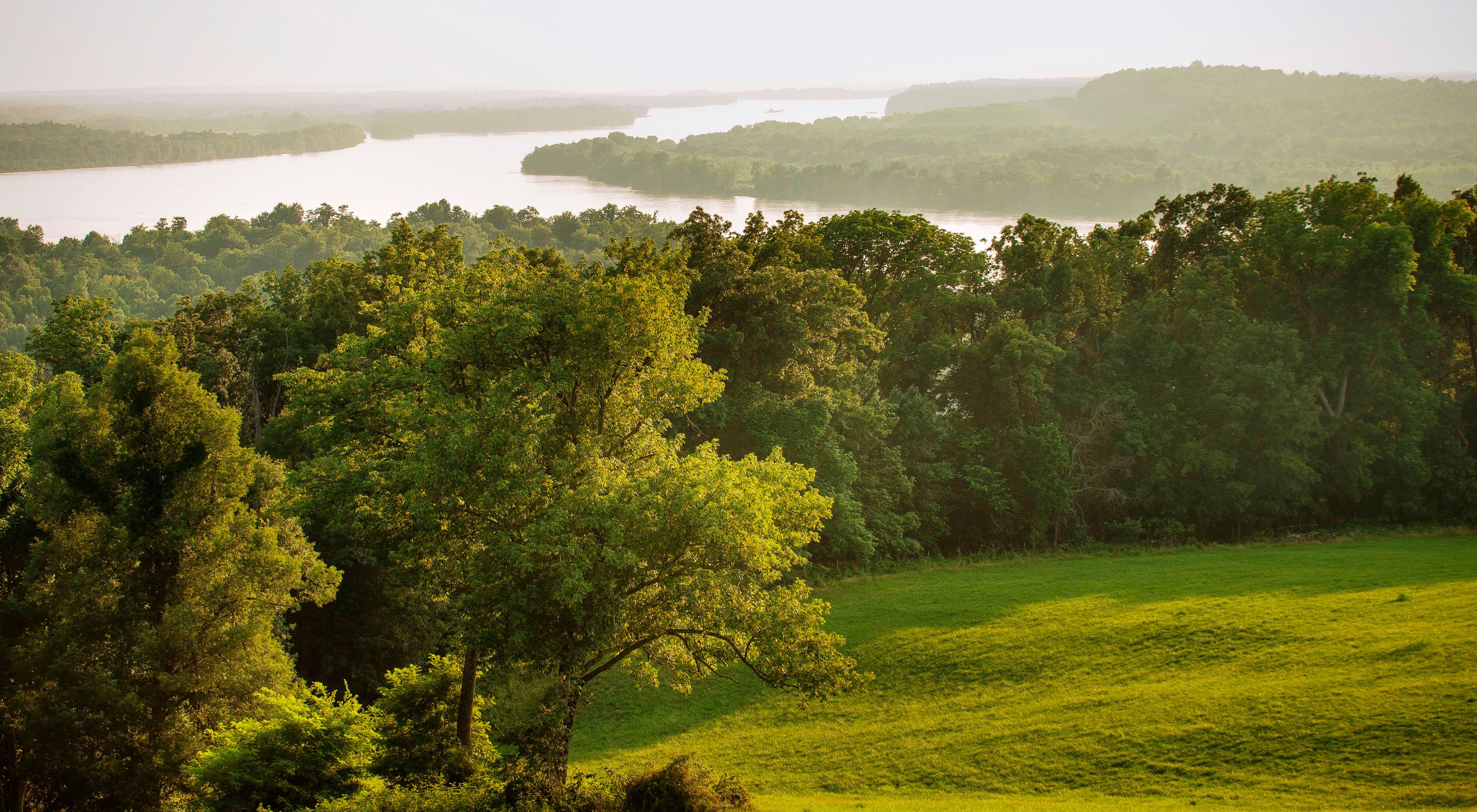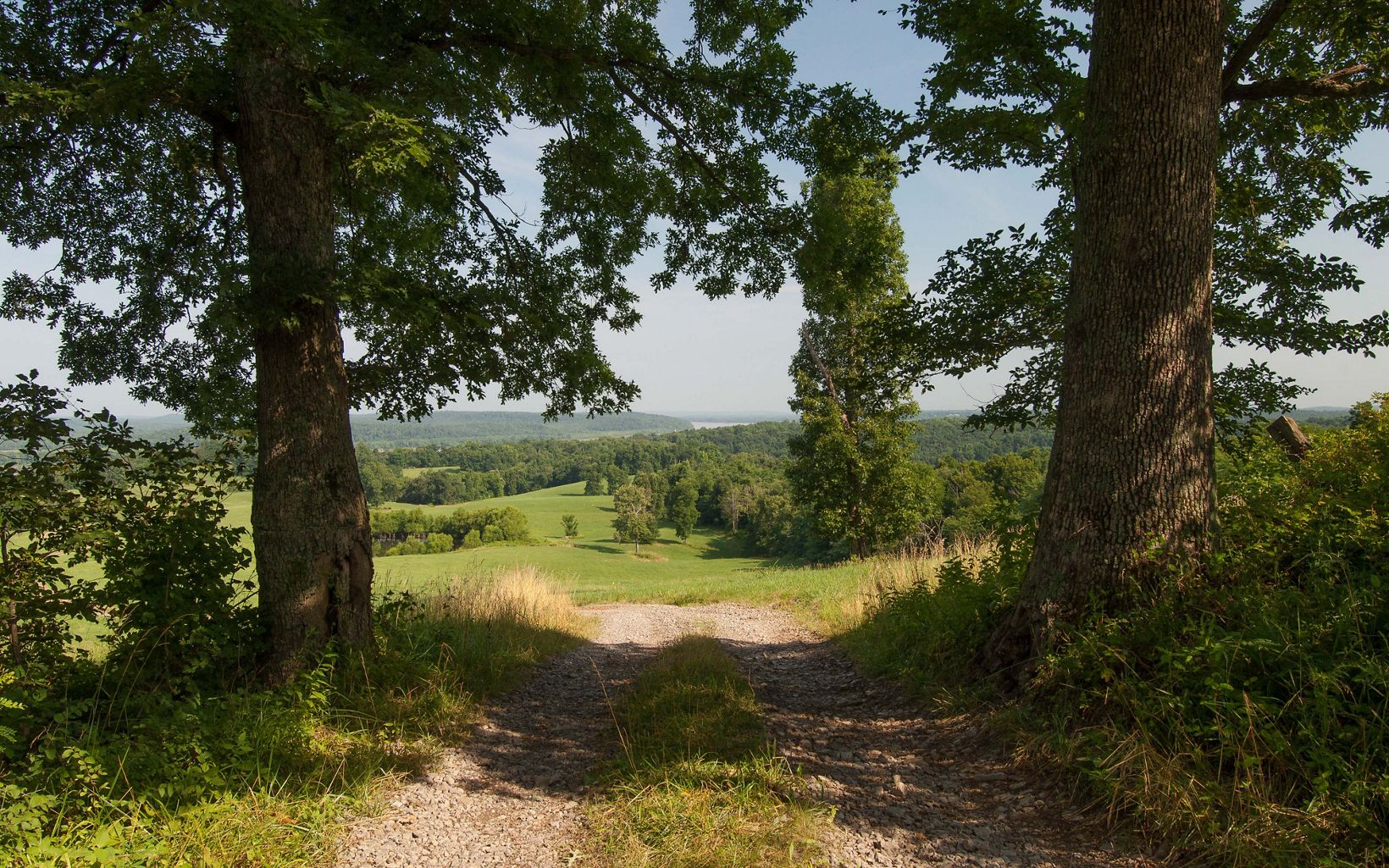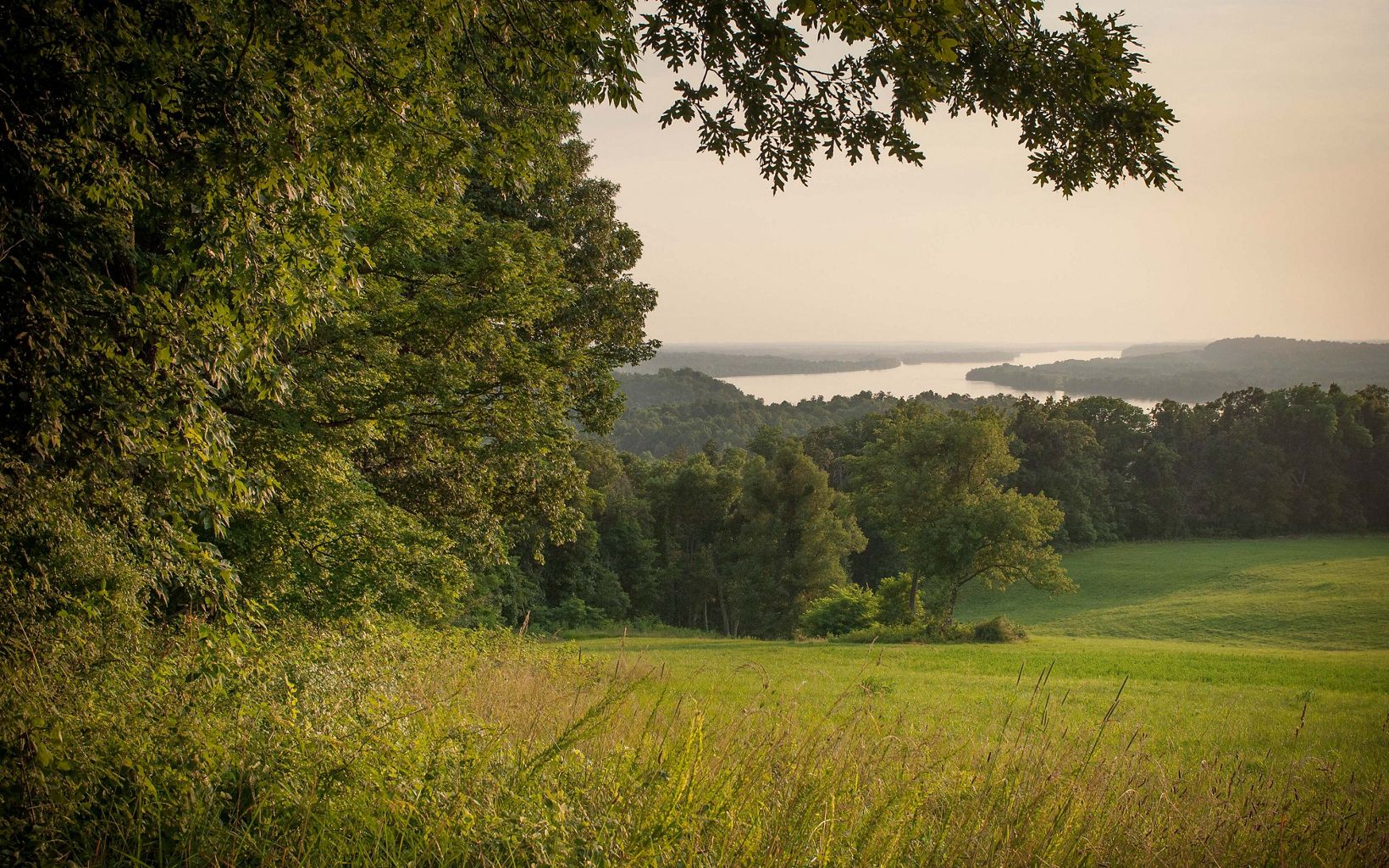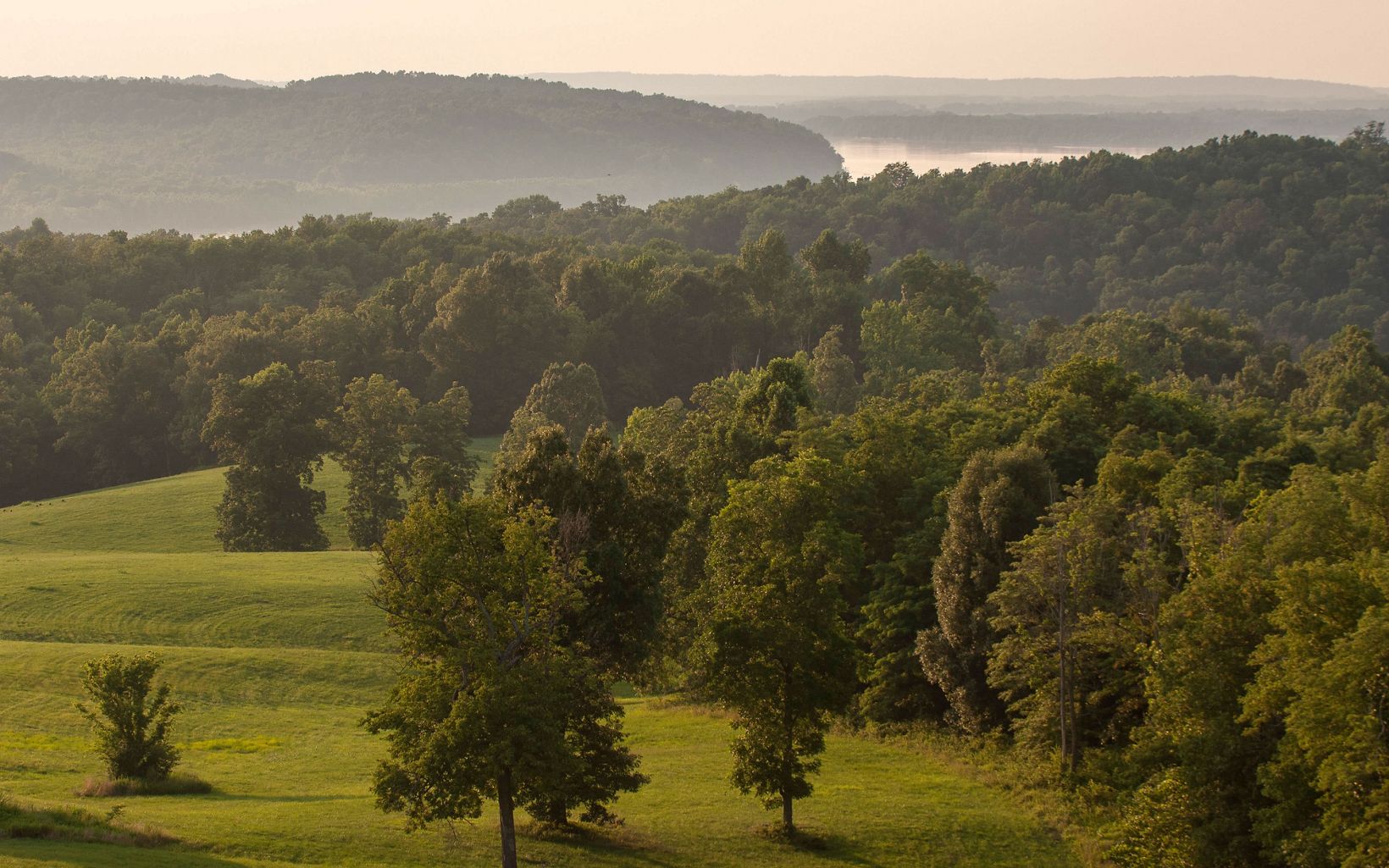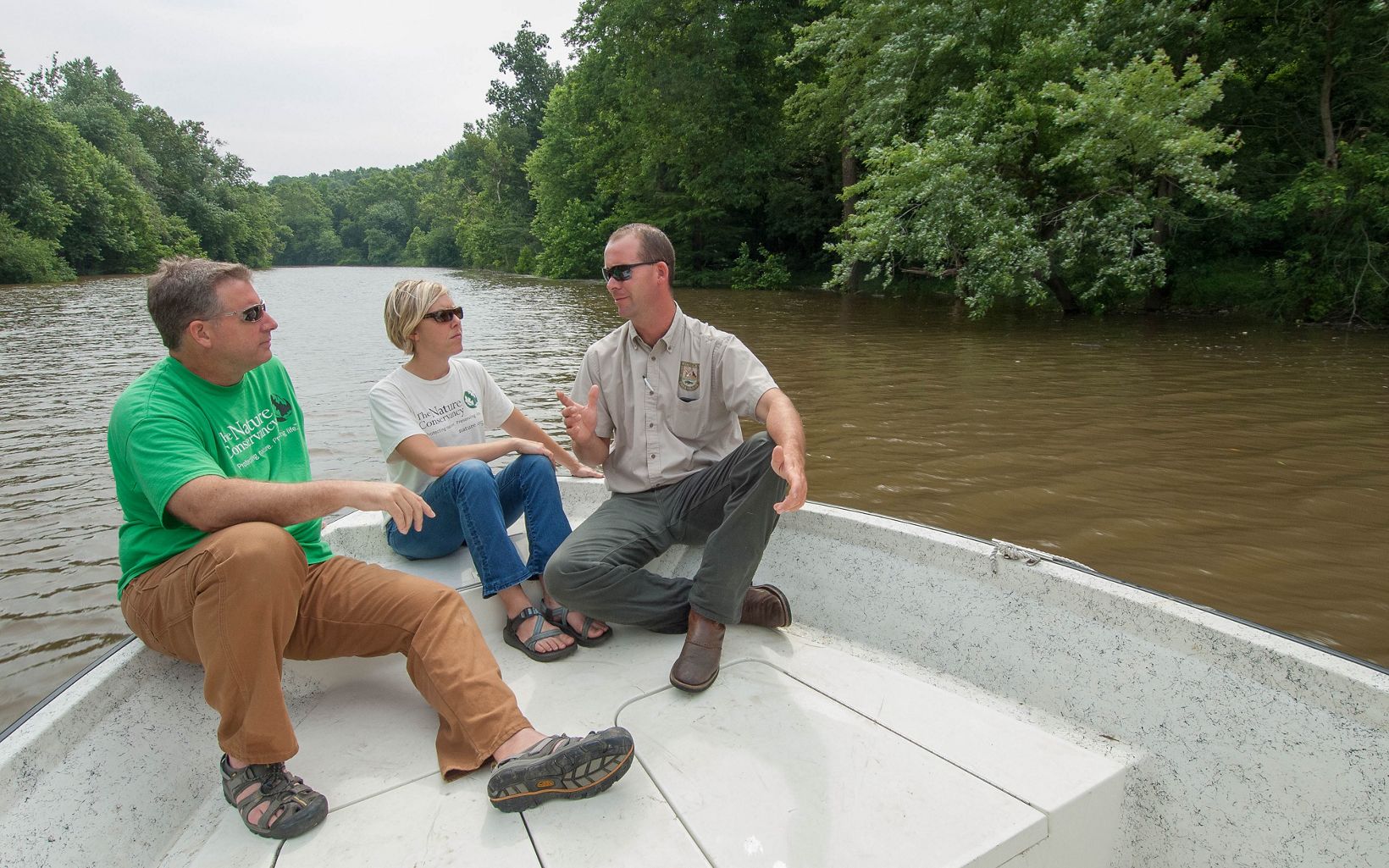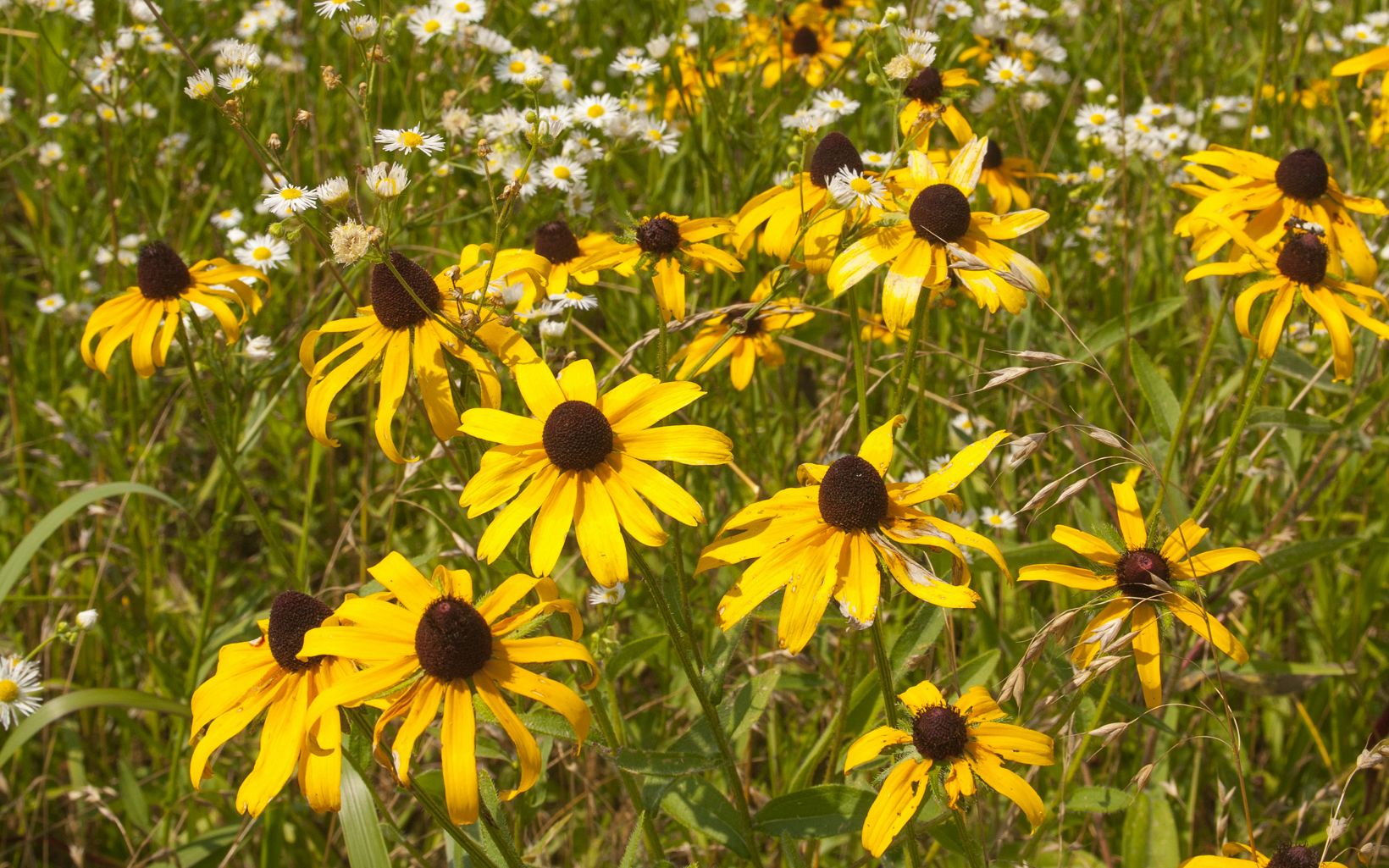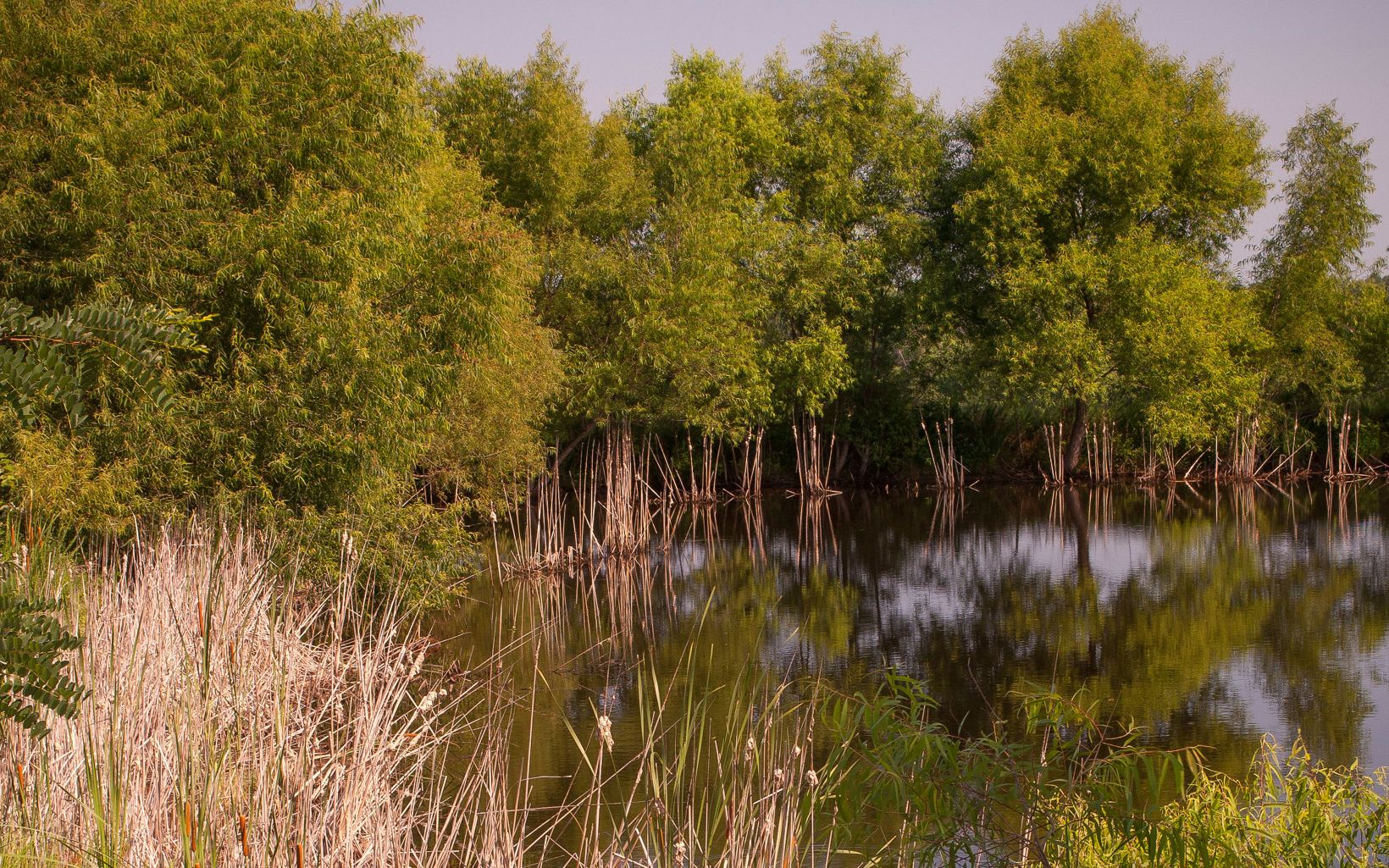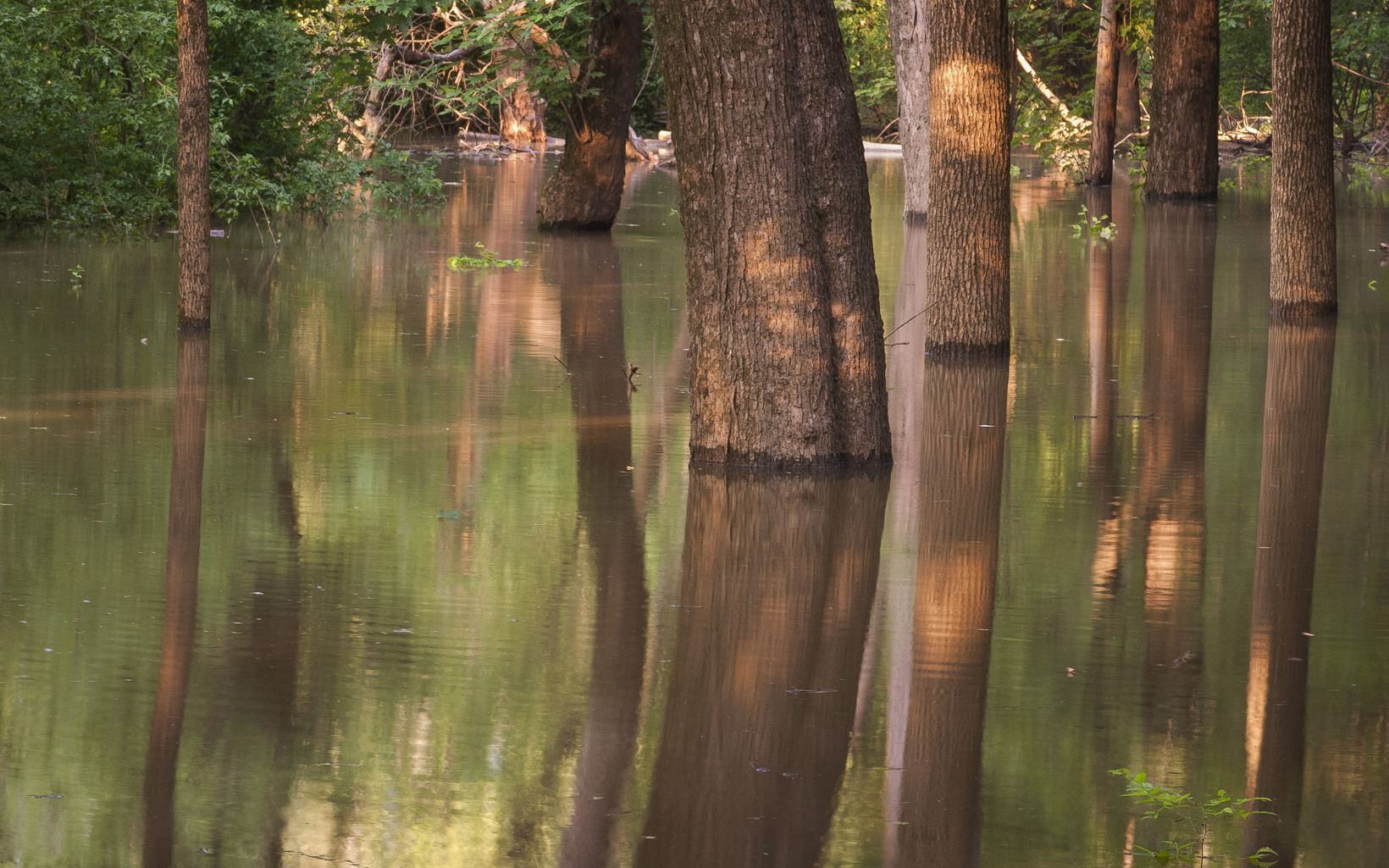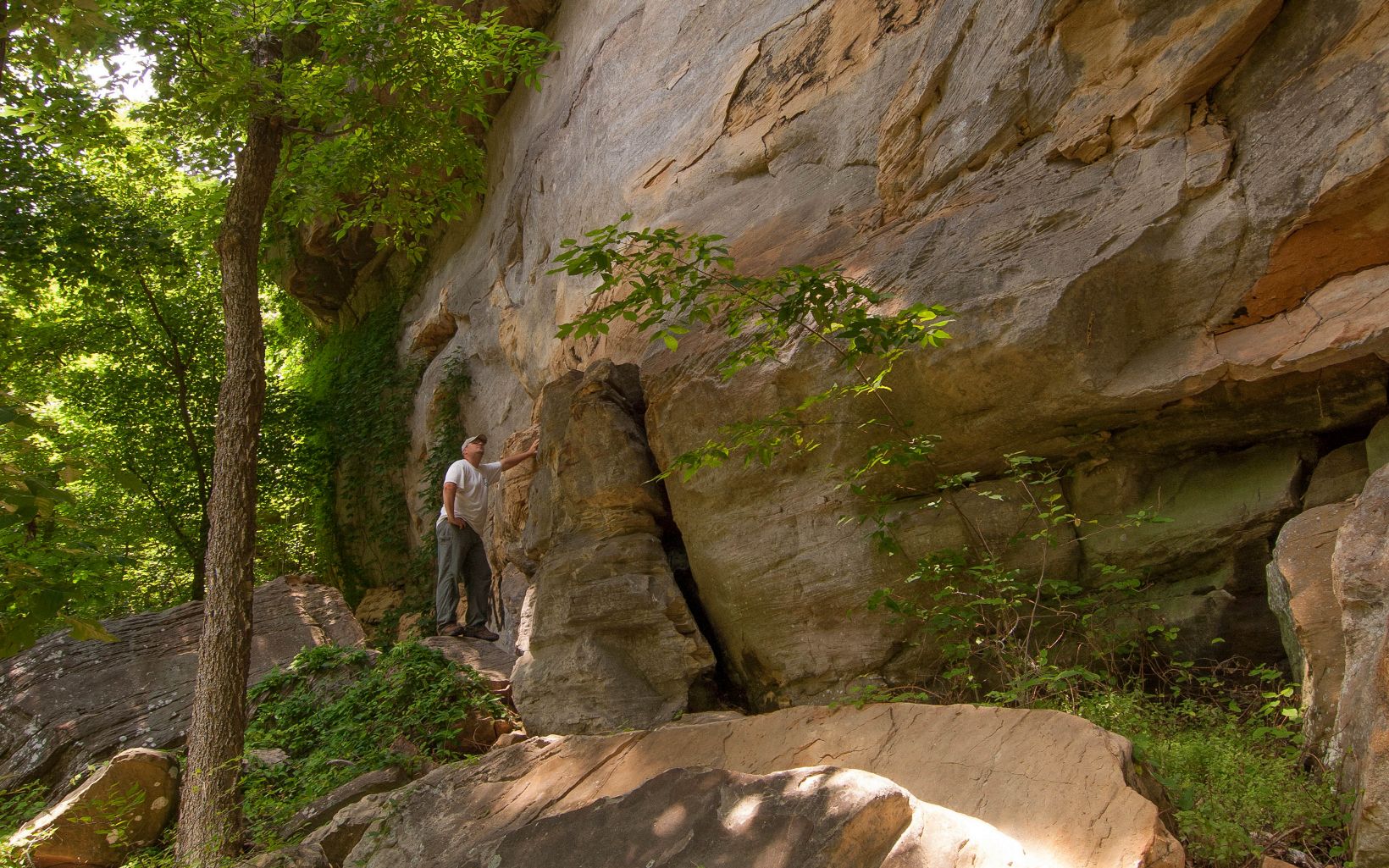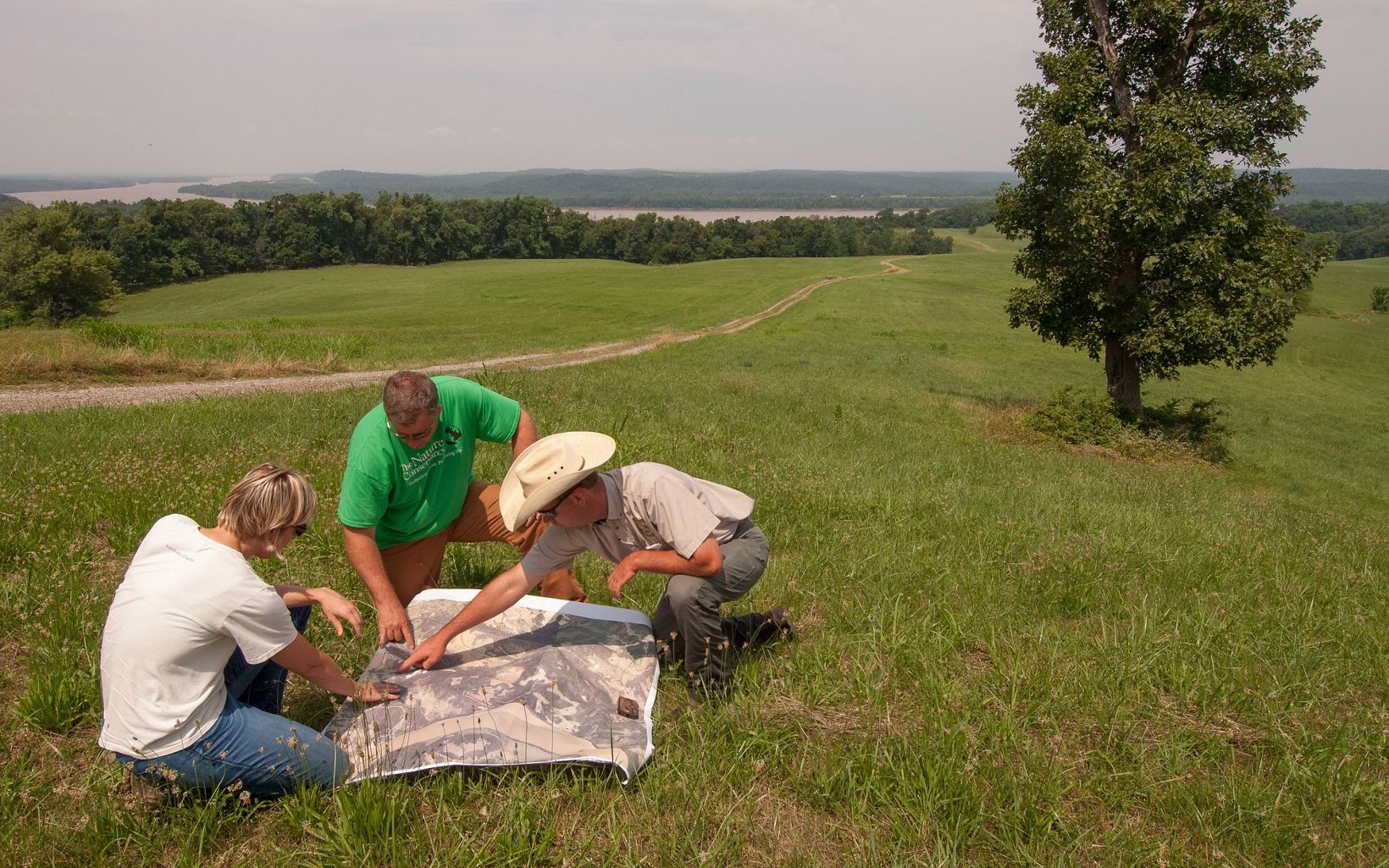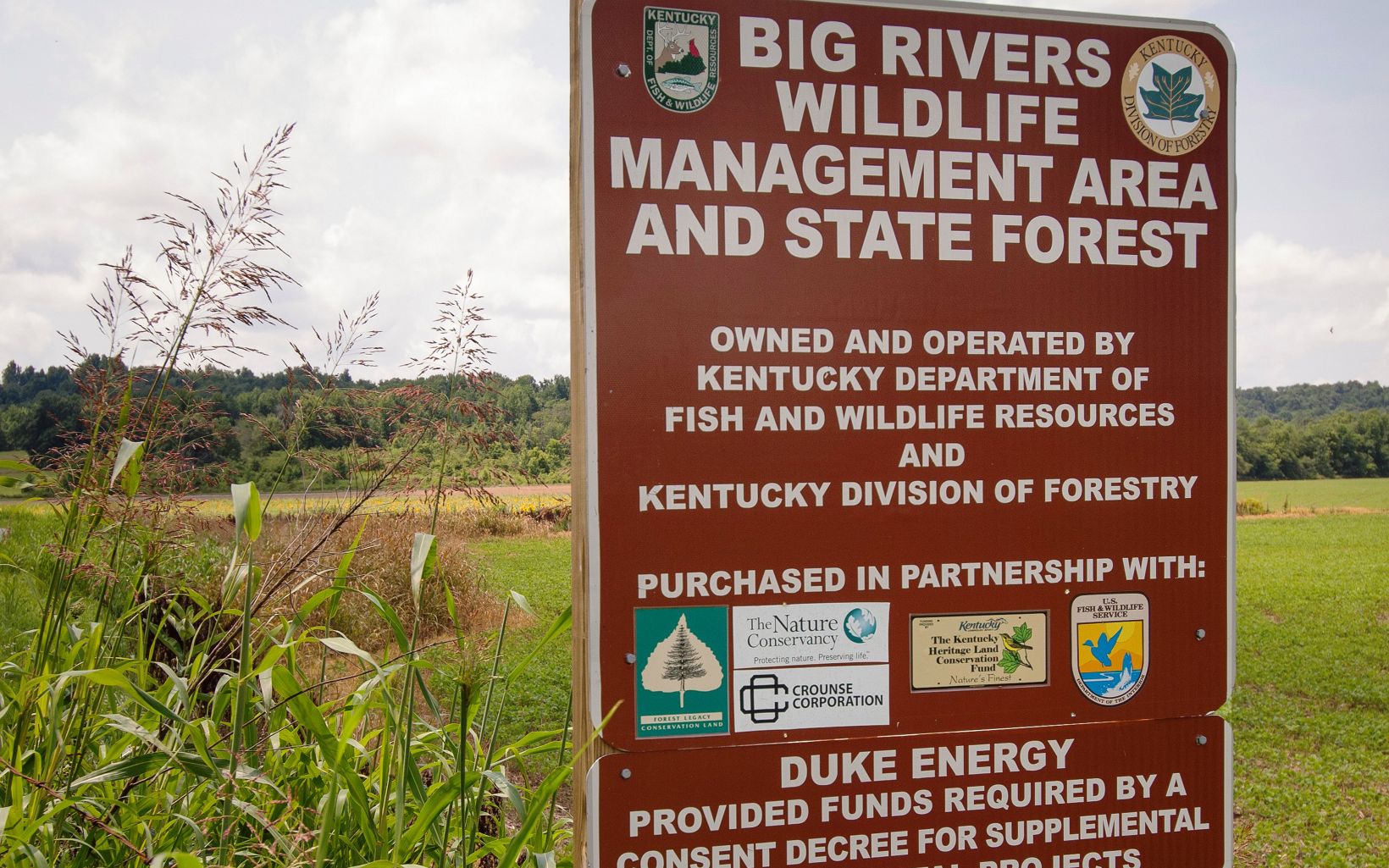Description
At The Nature Conservancy, acquiring land or an easement on a property complements the scientific research, advocacy, stewardship and education comprising our other conservation tools. The Kentucky Chapter used all of these to protect two large, contiguous forested tracts in western Kentucky’s Big Rivers Corridor, an area which had earned the distinction as the nation’s highest Forest Legacy Project priority due to threats of conversion to non-forested uses.
The process of conserving a portion of this extraordinary landscape began in 2011 when the Conservancy and partners raised part of a non-federal match that, together with support from the Kentucky Heritage Land Conservation Fund, enabled the state’s Department of Fish and Wildlife Resources (KDFWR) and Division of Forestry (KDF) to acquire the 2,571-acre Sturgis Tract, a former Forest Stewardship Council-certified working forest in western Kentucky. Two years later, the Conservancy purchased an adjacent 4,241-acre property with assistance from the United States Fish & Wildlife Service’s Indiana Bat Fund administered by the Kentucky Natural Lands Trust. The second phase of this ground-breaking effort represented the largest conservation project ever undertaken by the Conservancy’s Kentucky Chapter and the largest land acquisition in KDFWR and KDF history.
Protected together, these properties play a significant role in improving water quality in a critical portion of the Mississippi River Basin. They also contain valuable wildlife habitat, and unique cultural and geological treasures, that are now connected with other protected areas such as the Shawnee National Forest, Cypress Creek National Wildlife Refuge, Land Between−the−Lakes National Forest, Clark’s River National Wildlife Refuge, state−owned lands, and other non−governmental priority conservation areas.
While the Conservancy remains involved in conserving and restoring habitat at these properties, they are now managed by the Kentucky Department of Fish and Wildlife Resources (KDFWR) and the Kentucky Division of Forestry (KDF) as part of the Big Rivers Wildlife Management Area (WMA) and State Forest. This WMA is accessible to the public for hunting, fishing, hiking, canoeing, wildlife viewing and other compatible recreational activities. The agencies are also managing a portion of the landscape as a sustainable timber operation in line with guidelines set by the Forest Stewardship Council.
Size: 6,732 acres
Location: Along the border between Kentucky and Illinois, the Big Rivers WMA and State Forest hosts a portion of six rivers – the Mississippi, Ohio, Tennessee, Green, Tradewater and Cumberland.
What’s At Stake: The Big Rivers WMA and State Forest benefits as many as 16 species of plants and 25 species of animals that are listed as rare by the Kentucky State Nature Preserves Commission, including many neotropical songbirds. Mature, oak-dominated bottomland hardwood forests covering the landscape harbor the federally threatened northern copperbelly water snake and habitat important to federally endangered Indiana and gray bats. Three other endangered species – the fat pocketbook mussel, piping plover and least tern – have also been documented in the area.
Additionally, a portion of the Tradewater River Basin located within this protected area contains a staging and spawning area for many Ohio River fish species such as paddlefish and shovelnose and is critical to restoring populations of alligator gar, listed by Kentucky State Nature Preserves Commission as endangered within Kentucky.
Threats: Subdivision; agricultural land use and some mining.
Action: KDFWR and KDF acquired the original 2,571 acre Sturgis Tract in 2011. The Conservancy purchased the adjacent 4,242-acre tract in 2013 and then transferred that tract into KDFWR and KDF ownership to comprise the Big Rivers WMA and State Forest.
Visit: The Big Rivers WMA and State Forest contains steep uplands, rolling river bottoms and open agriculture fields, mostly in row crops of soy beans and corn. A number of local roadways provide access to parking and nice hiking trails. The area is also accessible by boat and launch points located on the Ohio and Tradewater rivers. Make sure to take in impressive views from the high bluffs overlooking the bottomlands and the Ohio River! NOTE: This area is growing in popularity as a hunting site so hikers should be sure to wear orange during hunting seasons.
Partners: Kentucky Division of Forestry, Kentucky Department of Fish and Wildlife Resources, Ducks Unlimited, Kentucky Heritage Land Conservation Fund Board, Kentucky State Nature Preserves Commission, National Wild Turkey Federation, Quality Deer Management Association, The Conservation Fund, U.S. Fish and Wildlife Service
